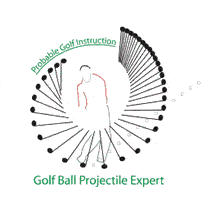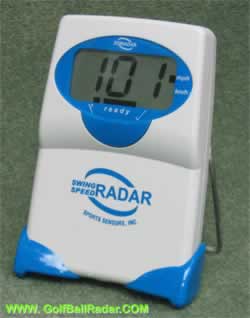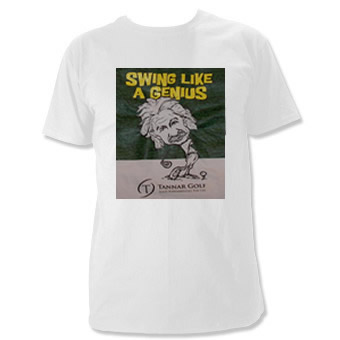
|
|
|
Golf Club Grooves & BackspinDo the grooves on the face of a golf club produce backspin?
What's all the hype about the USGA's new groove rules? The backspin is created by the balls compression on the clubface. This occurs between the time of impact and the moment of separation from the clubface. The clubs swing path and type of head rotation sees the ball mashed into the clubface. High-speed photography has verified that the ball "squishes" against the surface of the club. The friction between the club face and the ball is what creates the backspin in the same way that throwing a ball at an angle towards the ground will cause the ball to spin.
The more loft the greater the backspin. The grooves have no influence on the launch angle or backspin on the ball. Well known club designer Ralph Maltby built a set of irons with no face groves at all and played with them extensively to prove this point to disbelievers. In the mid 1980's the USGA undertook extensive groove type testing and concluded that in dry conditions it was loft, not grooves that put backspin on the ball. So what is the function of the club's grooves? They are like the treads of car tires. Tires with no treads would work perfectly well on dry roads. However, we need them to work in the wet as well. The treads channel away water so that the rubber of the tire stays in contact with the road. The treads prevent "hydroplaning." Clubfaces without grooves work fine in dry conditions but with water and grass in the way, the grooves allow some of the trapped materials to be moved from the collision zone. Without grooves you may get a high flyer with less spin and in this instance the ball does in fact run up the face - it actually skids up the face on the lubricating water and/or grass. Don't bother buying one of those "groove sharpeners" that are advertised. They'd only make a slight difference from the rough and/or when it's wet. And, do you know how long you need to grind those grooves with that little tool to make any kind of difference? Golf club metal is really hard!! In the mid 1980's the USGA undertook extensive groove type testing and concluded that in dry conditions it was loft, not grooves that put backspin on the ball. These tests were a follow-up of the tests done by Cochran & Stobbs published in the 1968 classic, "Search for the Perfect Swing" In 1968, researchers weren't sure about the exact interaction between the ball and clubface at impact. There was speculation that the ball skid up the clubface, gaining backspin during the slide. Now that we have awesome technology, that question as been answered. View the slow motion video below.
Power Meter measures Swing Speed
©Probable Golf Instruction, Ken Tannar 2001-2015. All Rights Reserved. Langley, B.C. V2Y 2G4 CanadaPhone: 604-309-7030 FAX: to fax, email an attachment probablegolf@yahoo.ca or golfexpert@probablegolfinstruction.com |
| GOLF ASSISTANTS |
|
Golf Trip Pairing CalculatorPlanning a golf trip with some friends/family? Trying to sort out the foursomes so people don't play too often with others? Order your ready made Spreadsheet. Type in the names, print out the groupings. Minimize repeat pairings.
Wind Caddy will advise you on aim, distance and club so that you can play the wind successfully. It takes the guess work out of club selection. New option to enter custom distances for each club. The algorithm will make a club suggestion accordingly. Use the right club in every condition!
|
|
|
| GOLF NEWS |
Golf Putting Green Reading Glasses |
| GOLF NEWSLETTER |
Statistics
·Putting
·Longest Golf Balls
·Games
·Handicap
·Scoring
·Shot Patterns
·Tournaments
·PGA Tour Stats
Pro Shop
·Ball Marker Engraved
·Books
·CDs & DVDs
·Green Reader
·Impact Labels
·Laser Rangefinder
·Longer Drives
·Products
·Teaching Aids
|
|
| GOLF POLL |
The 19th Hole
·Advertising
·Ask the Golf Expert
·Consultation/Litigation
·FAQs
·Golf Blog
·Golf Draws
·Links
·Science of Golf
·Tell a Friend
·Testimonials
·

Golf Ball Finder Glasses
Find all your errant golf balls and many more!
| GOLF TIPS |
How to play:
|








